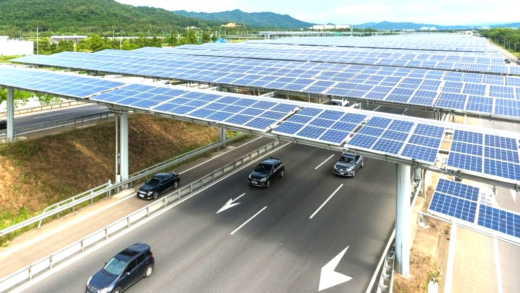Speed limiters are essential for vehicle safety, helping prevent accidents by restricting speeds. They enhance fuel efficiency, lower insurance costs, and promote responsible driving. However, potential drawbacks include reduced flexibility in emergencies and risks of tampering. Properly calibrated speed limiters can lead to significant fuel savings, while their role in fleet management ensures compliance and accountability among drivers.
What is a Speed Limiter: Understanding the Basics
Speed limiter is a crucial safety feature in vehicles designed to restrict the maximum speed that a vehicle can achieve. Its primary purpose is to enhance road safety by preventing drivers from exceeding legal speed limits. This is particularly important in areas with high pedestrian traffic or where accidents are more likely to occur. Speed limiters are commonly used in commercial vehicles, where adherence to speed regulations is essential for compliance and safety.
How Speed Limiters Work: The Mechanics Behind the Technology
Speed limiters function through an electronic control unit (ECU) that monitors the vehicle’s speed. When the vehicle reaches a predetermined speed, the ECU intervenes by limiting the throttle response. This means that even if the driver presses the accelerator pedal, the vehicle will not exceed the set speed. This system can be linked to various sensors that provide real-time data, ensuring precise control over the vehicle’s speed. The design is straightforward, providing a reliable way to maintain safety on the roads.
Types of Speed Limiters: Exploring the Different Variants
There are several types of speed limiters, each serving distinct purposes:
- Fixed Speed Limiters: These are set to a specific speed and cannot be altered. They are often used in fleet vehicles to enforce compliance.
- Variable Speed Limiters: These can adjust based on road conditions or regulations, providing flexibility in different driving environments.
- Intelligent Speed Adaptation: This advanced technology uses GPS and mapping data to adjust the speed limit based on the vehicle’s location.
Each type has its unique benefits and applications, ensuring that speed limiters can cater to various driving needs and enhance overall road safety.
Importance of Speed Limiters in Vehicles: Why They Matter
Speed limiters play a pivotal role in enhancing vehicle safety. By restricting maximum speeds, they help prevent accidents that often occur due to excessive speed. This feature is particularly essential in urban areas where pedestrian traffic is high. Studies show that reducing speed limits can significantly decrease the severity of accidents. For instance, a vehicle traveling at 30 mph is less likely to cause fatal injuries than one going 40 mph. Furthermore, speed limiters assist in regulatory compliance, ensuring that drivers adhere to local speed limits and thereby promoting safer driving practices.
Speed Limiters and Road Safety: Enhancing Safe Driving
Speed limiters directly contribute to road safety by mitigating the risk of speed-related incidents. When drivers know their vehicle will not exceed a certain speed, they are more likely to maintain focus on the road rather than on the speedometer. This creates a more relaxed driving environment, which can lead to better decision-making. Moreover, speed limiters can reduce the likelihood of aggressive driving behaviors, such as tailgating or sudden lane changes. According to traffic safety reports, regions with mandatory speed limiters in commercial vehicles experience lower accident rates, highlighting the technology’s positive impact on overall road safety.
Adjusting Speed Limiters: Can They Be Changed or Overridden?
Adjusting speed limiters varies depending on the type installed in the vehicle. Fixed speed limiters are set to a specific speed and cannot be altered, ensuring strict compliance. In contrast, variable speed limiters offer flexibility, allowing adjustments based on current road conditions or regulations. This adaptability can be particularly beneficial in different driving environments, such as construction zones or residential areas. However, overriding speed limiters is often discouraged, as it defeats their purpose. Regulations typically govern the modification of speed limiters to ensure that safety remains a priority.
Benefits of Speed Limiters: Why They Are a Good Idea
Speed limiters provide numerous advantages that enhance vehicle safety and operational efficiency. Firstly, they promote safe driving by preventing excessive speeds, which are a leading cause of accidents. By enforcing a maximum speed, drivers are less likely to engage in risky behaviors, leading to fewer collisions. Additionally, speed limiters can enhance fuel efficiency by maintaining optimal speed ranges, reducing fuel consumption.
Moreover, these devices can lower insurance costs for fleet operators, as they demonstrate a commitment to safety and compliance with regulations. Fleet vehicles equipped with speed limiters often enjoy reduced premiums due to their lower risk profiles. Finally, speed limiters contribute to a more predictable driving environment, benefiting all road users, including pedestrians and cyclists.
Drawbacks of Speed Limiters: Are There Any Downsides?
While speed limiters offer many benefits, they also have some drawbacks. One significant concern is the potential for reduced flexibility in driving. Drivers may find themselves unable to react appropriately in emergency situations, as the speed limiter may prevent them from accelerating when needed. This could lead to frustration and a feeling of helplessness, especially in rapidly changing traffic conditions.
Another drawback is the possibility of tampering. Some drivers may attempt to override or disable speed limiters, which poses a safety risk and undermines the purpose of the device. Additionally, implementing speed limiters may require upfront costs for installation and calibration, which can be a financial burden for some vehicle owners.
Speed Limiters’ Impact on Fuel Efficiency: Saving Fuel or Not?
Speed limiters can positively affect fuel efficiency by ensuring that vehicles operate within optimal speed ranges. When vehicles travel at higher speeds, they consume more fuel due to increased aerodynamic drag and engine load. By limiting speeds, vehicles can achieve better fuel economy, leading to lower operational costs. For instance, studies have shown that trucks operating at a maximum speed of 65 mph can achieve fuel savings of up to 10% compared to those traveling at 75 mph.
However, the actual impact on fuel efficiency can vary based on driving conditions and vehicle types. In some scenarios, a speed limiter set too low might lead to inefficiencies, particularly in highway driving where higher speeds are more economical. Therefore, finding the right balance is crucial for maximizing fuel savings while ensuring safety.
Speed Limiters in Fleet Management: Keeping Drivers in Check
In fleet management, speed limiters play a vital role in maintaining control and ensuring compliance among drivers. By implementing speed limiters, fleet operators can monitor and enforce speed regulations, thereby reducing the risk of accidents and associated costs. This technology allows for better tracking of driver behavior, promoting accountability and encouraging safer driving habits.
Moreover, speed limiters can significantly reduce wear and tear on vehicles, leading to lower maintenance costs and extended vehicle lifespans. They also facilitate adherence to legal speed limits, which is essential for fleet compliance. Overall, speed limiters enhance operational efficiency and safety, making them an invaluable tool in fleet management.





Comments are closed.